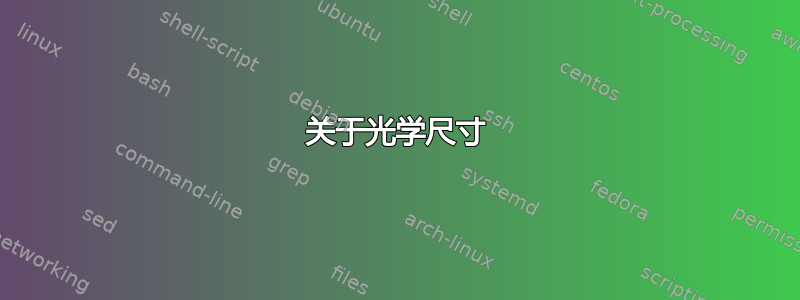
我正在考虑购买Minion Math 字体。价格从 80 欧元到 700 欧元,有多个中间套装。我不明白重量和光学尺寸之间的差异。
有人可以提供一个视觉对比吗?
我应该以低预算购买什么套装(我通常为我的学生排版讲义)?
我是否也需要 Minion Pro 或 Minion Math 提供的文本字体?
答案1
关于光学尺寸
你说你不明白光学尺寸和重量的区别。这很简单。重量印刷师指的是构成字形的笔画的粗细。笔画较粗的字形比笔画较细的字形更粗。常见的粗细有粗体或细体。要在 LaTeX 中切换到粗体字体,请使用\textbf(或\mathbf)。
视觉尺寸或设计尺寸是旨在设置为特定尺寸的字体。当文本设置为铅字时,必须为每种可能的尺寸设置一组额外的字形,但随着计算机排版的出现,设计师开始只为 12pt 字体大小制作字体,因为它可以轻松缩放到任何其他尺寸。不幸的是,这种缩放不是最理想的,高对比度的字体在小尺寸下几乎无法辨认。因此,人们引入了视觉尺寸,即针对特定尺寸范围优化的字体。Adobe 引入的最常见的视觉尺寸是 Tiny、Caption、Text、Subhead 和 Display。它们的名称反映了预期的使用位置。相应的尺寸范围是
up to 6pt: Tiny
6pt-8.4pt: Caption
8.4pt-13pt: Text
13pt-19.9pt: Subhead
above 19.9pt: Display
当然,重量和视觉尺寸是相互独立的,可以组合使用。这就是为什么全套 Minion Math 都有名为 的文件MinionMath-BoldSubh.otf,其中包含 Minion Math 的设计尺寸 Subhead 以粗体重量显示。
关于 Minion Math
我拥有基础套装Minion Math。由于 Minion Math 是一种数学字体,因此它不附带文本字体,这就是我使用随 Adobe Illustrator 分发的 Minion Pro 文本字体的原因。
基本集包括以下 OpenType 字体文件
MinionMath-Bold.otf
MinionMath-Capt.otf
MinionMath-Regular.otf
MinionMath-Tiny.otf
我还收到了用于 pdfTeX 的 Type 1 字体文件和宏,但如果这种支持在某个时候被取消,我也不会感到惊讶。我甚至不知道这些宏是否提供了对所有目前涵盖的字形由 Minion Math 提供。OpenType 字体与 LuaTeX 和 XeTeX 配合良好*。最近我还整理了一个 ConTeXt 打字稿文件,可以根据需求提供。
对于大多数基本的数学排版来说,拥有常规的粗细,已包含粗体字母数字字符Unicode 规定。但是,如果您要排版 Unicode 中没有粗体变体的符号(例如粗体积分符号),则需要两个粗细:常规的和大胆的。请不要考虑只购买常规的然后使用假粗体。额外的标题和微小的字体自带基础套装体重正常,略宽于常规的. 笔画差别很小。
由于这种细微差别当然是一种非常主观的感知,请参阅下一部分来自己想象。
视觉比较
我使用 LuaTeX 排版了此“答案”最末尾的示例两次,一次使用注释掉SizeFeatures的块(无光学),一次使用光学。
无光学元件: 屏幕截图链接
嵌入了以下字体( 的输出pdffonts)
name type encoding emb sub uni object ID
------------------------------------ ----------------- ---------------- --- --- --- ---------
KESRZU+MinionPro-Bold CID Type 0C Identity-H yes yes yes 4 0
FWTMSK+MinionPro-Regular CID Type 0C Identity-H yes yes yes 5 0
DRZEGS+MinionPro-It CID Type 0C Identity-H yes yes yes 6 0
XPNDTR+MinionMath-Regular CID Type 0C Identity-H yes yes yes 7 0
KPJMUA+MinionMath-Regular CID Type 0C Identity-H yes yes yes 8 0
KDMCFD+MinionPro-Bold CID Type 0C Identity-H yes yes yes 9 0
UTEPWH+MinionMath-Regular CID Type 0C Identity-H yes yes yes 10 0
VHZLAM+MinionPro-Regular CID Type 0C Identity-H yes yes yes 11 0
带光学元件: 屏幕截图链接
嵌入了以下字体( 的输出pdffonts)
name type encoding emb sub uni object ID
------------------------------------ ----------------- ---------------- --- --- --- ---------
KESRZU+MinionPro-Bold CID Type 0C Identity-H yes yes yes 4 0
FWTMSK+MinionPro-Regular CID Type 0C Identity-H yes yes yes 5 0
DRZEGS+MinionPro-It CID Type 0C Identity-H yes yes yes 6 0
XPNDTR+MinionMath-Regular CID Type 0C Identity-H yes yes yes 7 0
PXNQGX+MinionMath-Capt CID Type 0C Identity-H yes yes yes 8 0
KDMCFD+MinionPro-Bold CID Type 0C Identity-H yes yes yes 9 0
VHZLAM+MinionPro-Regular CID Type 0C Identity-H yes yes yes 10 0
例子
\documentclass[12pt]{article}
\pagestyle{empty}
\usepackage{amsmath}
\usepackage{amsthm}
\newtheorem{theorem}{Theorem}
\usepackage{unicode-math}% loads fontspec
\setmainfont[%
Ligatures={TeX,Common},
Numbers={Proportional,Lining},
Kerning=On,
]{Minion Pro}
\setmathfont[
SizeFeatures = {
{Size = -6, Font = MinionMath-Tiny,
Style = MathScriptScript},
{Size = 6-8.4, Font = MinionMath-Capt,
Style = MathScript},
{Size = 8.4-13, Font = MinionMath-Regular
},
},
]{MinionMath-Regular}
\setmathfont{MinionMath-Bold.otf}[range={bfup->up,bfit->it}]
\begin{document}
\begin{theorem}[Residue theorem]
Let $f$ be analytic in the region $G$ except for the isolated
singularities $a_1,a_2,\dots,a_m$. If $\gamma$ is a closed
rectifiable curve in $G$ which does not pass through any of the
points $a_k$ and if $\gamma\approx 0$ in $G$, then
\[
\frac{1}{2\pi i}\int\limits_{\gamma}f\left(x^{\mathbf{N}\in\BbbC^{N\times 10}}\right) = \sum_{k=1}^m
n(\gamma;a_k)\mathup{Res}(f;a_k)\,.
\]
\end{theorem}
\begin{theorem}[Maximum modulus]
Let $G$ be a bounded open set in $\BbbC$ and suppose that $f$ is a continuous function on $G^-$ which is analytic in $G$. Then
\[
\max\{|f(z)|\:z\in G^-\} = \max\{|f(z):z\in \partial G\}\,.
\]
\end{theorem}
First some large operators both in text: $\iiint\limits_{Q}f(x,y,z)\,\mathup{d}x\,\mathup{d}y\,\mathup{d}z$ and $\prod_{\gamma\in\Gamma_{\overbar{C}}}\partial\left(\tilde{X}_\gamma\right)$; and also on display
\[
\iiiint\limits_{Q}f(w,x,y,z)\,\mathup{d}w\,\mathup{d}x\,\mathup{d}y\,\mathup{d}z\leq\oint_{\partial Q}f^\prime\left(\max\left\{\frac{\Vert w\Vert}{\vert w^2+x^2\vert};\frac{\Vert z\Vert}{\vert y^2+z^2\vert};\frac{\Vert w\oplus z\Vert}{\vert x\oplus y\vert}\right\}\right)
\]
\end{document}


